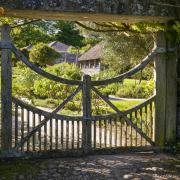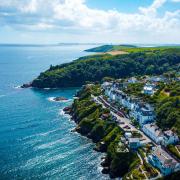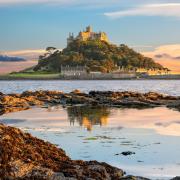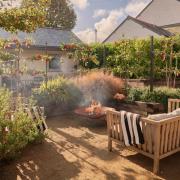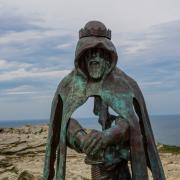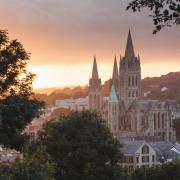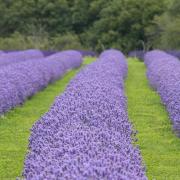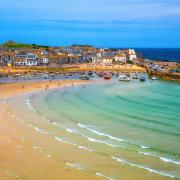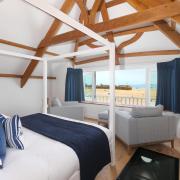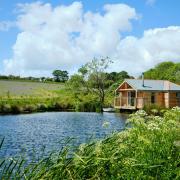Cornwall’s fishing coves and harbours have provided both livelihoods and protection for generations of coastal communities.

Boscastle
The north coast of Cornwall is rugged and wild. When lashed by heavy seas there are few places of safety for mariners caught out along this coastline. Boscastle harbour is certainly an exception to this since the twisting shape of its valley as it enters the sea has created one of Cornwall’s most awe-inspiring natural harbours.

Boscastle has an interesting history centred around its old harbour, which was built in 1584 by Sir Richard Grenville and is little changed since that time. It was once an important port with trade linking it to a variety of south coast ports as well as those of South Wales and Bristol. It saw a peak of activity in the 19th century when a variety of goods such as coal and limestone from South Wales and fertiliser from Bristol were imported.

Although the innermost harbour is well protected from storms, the entrance to the outer harbour has always been extremely difficult to navigate, so sailing ships were assisted by ‘hobbler’ boats with eight oarsmen and some were further assisted by people using ropes from either side of the channel.

Penberth
Found on the south coast of West Penwith, Penberth is an idyllic cove with cobble slope and a historic capstan windlass which hauled boats from the water. The windlass is no longer in use having been replaced by a modern winch, but the process of hoisting boats remains as it has done for centuries, evidenced by the deep grooves in the cobbles.

Penberth has relatively recently become famous through its starring role in the BBC One TV series Poldark. This is the hamlet known as ‘Sawle’ where Demelza’s brothers, Sam and Drake, lived and many scenes were filmed using the clapper bridge, stepping-stones, ford and romantic old cottages.
Apart from having a history as a pilchard fishing cove, the valley was once used as a market gardening area shipping flowers to London. Fishing boats are still regularly launched from the cove making this a great place to sit and watch the comings and goings of people and tide.

Mullion Cove
Reverend Charles Alexander Johns in his book A Week at the Lizard (1848) wrote: “Mullion Cove contains a mill, some fish cellars, and a few humble cottages... Making our way to the beach between the seine-boats, hauled up beyond the reach of the surf, and in the fishing-season having all their stores on board for instant use, we find ourselves in one of the most romantic coves on the coast.”
In 1868 plans were first drawn up to create a harbour. At that time the land was owned by Lord Robartes of Lanhydrock and his plans were extremely ambitious including a breakwater between Mullion Island and the nearby headland. These plans didn’t come to fruition and nothing else was done until 1890 when work started on a much simpler harbour wall.

This wall took two years to build being delayed by the great blizzard of March 1891. The harbour was completed in 1897 when the second pier leading out towards the end of the first wall was built.

Cadgwith
On the east side of The Lizard, Cadgwith Cove has been used to launch boats since the Middle Ages with a hamlet growing here from the 16th century. C.A. Johns said, “The romantic fishing-village of Cadgwith is situated at the termination of an exceedingly pretty valley.” He goes on, “The population is composed principally of fishermen” and many “who spend their leisure-time in polishing specimens of serpentine”.

It's hardly a surprise that Cadgwith is dominated by its connection to the sea, even today it is a difficult place to get to by land! Around the cove we see the charming old buildings which once housed pilchard presses, there are various old winches, a huer’s hut on the cliffs and the old lifeboat house.

It is said that on one day in 1845 over 15 million pilchards were landed here! Times have changed but Cadgwith is still very much a fishing cove with boats regularly heading out to sea to harvest crab, lobster, mackerel and mullet to name but a few. Some of this seafood finds its way into the dishes of the local pub.

Polperro
Polperro is one of Cornwall’s most attractive fishing villages nestling into a niche at the base of the cliffs between Looe and Fowey. Its sheltered and hidden location along a difficult stretch of coastline meant it was ideally placed to be a major player in one particular Cornish activity.

Smuggling was at its height in the 18th century. At this time the British government imposed high taxes on certain goods as part of its efforts to finance the wars in America and France. The taxed goods included luxury items such as spirits, tea and tobacco but also some more basic goods such as salt.

Polperro is remote and so would have been difficult to access by land or sea but it was also well-situated to smuggle goods from the island of Guernsey, from where the majority of such goods were brought. The smugglers of Polperro were extremely well organised, led by Zephaniah Job who acted as banker, advisor and even hired lawyer when the law caught up with villagers. His co-ordination must have encompassed the whole village since when John Wesley visited Polperro in 1762 he reported that, “well nigh one and all bought, or sold, un-customed goods”.

David’s photography tips
For wider views of Boscastle harbour I recommend visiting at high tide. My favourite view of the harbour and surrounding valley is from Penally Hill on a summer’s evening when the sun shines up the valley.
Some of the best views of Penberth Harbour are from the coast path to the west but there is plenty of potential for shots with interesting foreground subjects such as the capstan.
Mullion Cove is great when it’s stormy because the waves break over the harbour wall, but stay well back.
There are two great positions to take photos of Cadgwith, they are from the cliffs near the huer’s hut in the early morning and from The Todden, the small peninsula which separates the two beaches in the cove.
As well as having a fascinating history Polperro is a wonderful place for photography. Early in the morning, particularly in winter the view from the coast path to the east side of the harbour is brilliant.
To see more of David’s photography visit his website at www.davidchapman.org.uk or look out for his book ‘Photographing Cornwall’ available in all local bookshops.




